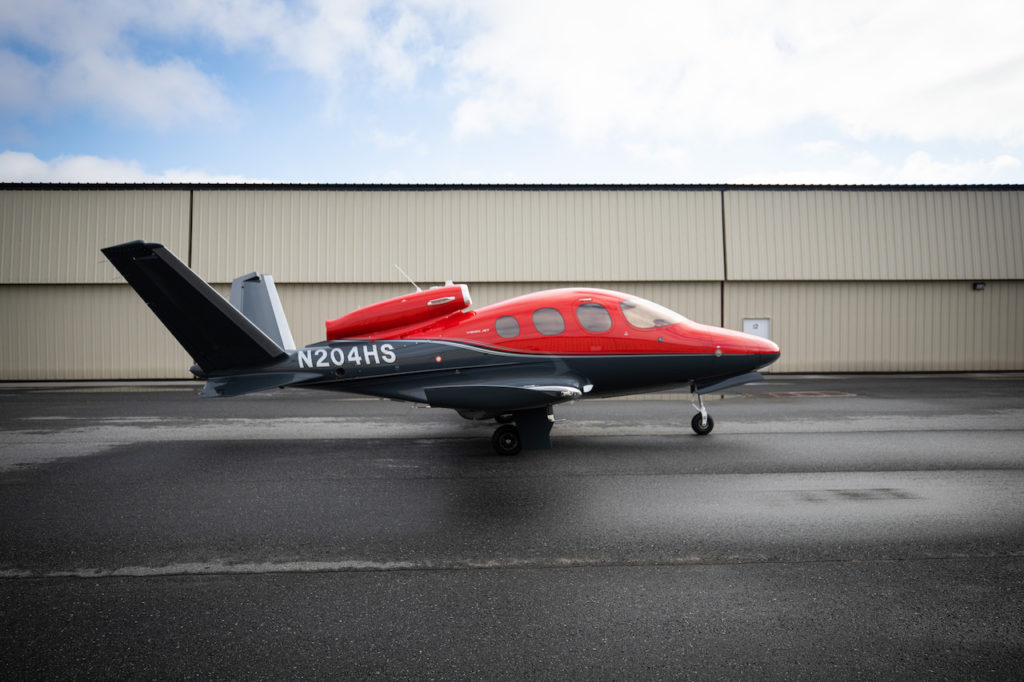

There was some convective activity buried in the layers centered about 65 nm south of the Volunteer VOR (VXV) near Knoxville, but there were widely spaced cells and no pireps of note. Once preflighted, loaded and on our way, we took another look at the weather to expect for the 454 nm journey ahead. We’d had a letup in the morning sprinkles when we went out on the ramp to N275CM that gave some indication of the moisture level to be found within the clouds above. The Williams International FJ33-5A powerplant produces about 1,846 pounds of thrust. We turned on the boots as we entered the clouds, along with the engine anti-ice we’d engaged after takeoff and the alcohol-based ice protection system for the windshield. We had a lot of room under the overcast and only a thin layer to contend with, so what we picked up in the transit between 2,500 and 10,000 feet-though not anything to brush off-was a nonevent, save for the fact it gave me a good sense of how the deice and anti-ice systems work on the SF50. On our first flight in the previous G2 model, N858AG, back in December 2020, the ice was not only anticipated-yeah, December-it was also wholly expected, given the reports of light rime on the descent from Delta and Envoy flights coming into Knoxville that morning. We would also have a chance to see the jet’s latest advancement in connectivity: the addition of in-flight Wi-Fi from Gogo. This would result in a projected boost of 20 percent at the highest airports in the system as well as a respectable 4 percent reduction in takeoff and landing distances at sea level.
#Cirrus vision jet cost update#
More on that-and its value both in initial type rating and recurrent training-a bit later.īefore we met up for the flight, Bergwall and I briefed the new features on the G2+, which centered around an update to the Williams International FJ33-5A engine that expanded temperature limits, allowing for the use of more of the available thrust at high temperatures and field elevations.
#Cirrus vision jet cost plus#
We’d had a couple of hours in the straight G2 version a few months earlier, plus a solid session in the sim.

Fortunately, it wasn’t my first time flying with Cirrus Aircraft’s Matt Bergwall in the SF50.

The cold rain on a July morning in Tennessee came as a surprise-and frankly did not bode well for a demo pilot looking to show off hot-and-high-altitude performance. The Vision Jet’s empennage features a v-tail to help accommodate the positioning of the single turbine engine. Cirrus Vision Jet G2+ at a GlanceĪnd it’s one that now extends to the addition of Safe Return-the Cirrus name for Garmin’s 2021 Flying Innovation Award-winning Autoland system-the G2 platform that was designed around the capability to land the airplane without pilot intervention. There’s an underlying comfort to that but also a different kind of responsibility. Not that we even came close to pulling out that particular checklist, but the fact that this is one jet with that final option available entered into my thought process. And it keeps most of us, I believe, from pulling that handle indiscriminately.īut I thought of this option when we encountered a long climb through unanticipated ice in early July during a test flight of the latest Vision Jet iteration, the G2+, from Chattanooga (KCHA), Tennessee, to Hagerstown (KHGR), Maryland.
#Cirrus vision jet cost simulator#
The sense of this stays with you, proved when I flew in the company’s Vision Jet G1 simulator this past fall at the Vision Center in Knoxville, Tennessee. Many pilots, myself among them, will feel uneasy-or worse-at surrendering control of the airplane to a piece of fabric suspending on thick cables somewhere above the airframe, as you swing like a pendulum below. The company wants everyone who will sit left seat in its single-engine Vision Jet to know how that feels so pilots will be able to do it if they need to-but not without conscientious determination. Somewhere in between sits a pilot in the future who has pulled on the Cirrus Airframe Parachute System handle in a Cirrus SF50. The pilots who have put various aircraft through their initial paces in the experimental stage may know another-the deployment of a flight-test airframe chute to recover during spin testing gone south, or an airframe mishap. What will it feel like if you ride the chute down? Skydivers know one answer-based on the parachute they strap themselves into.


 0 kommentar(er)
0 kommentar(er)
